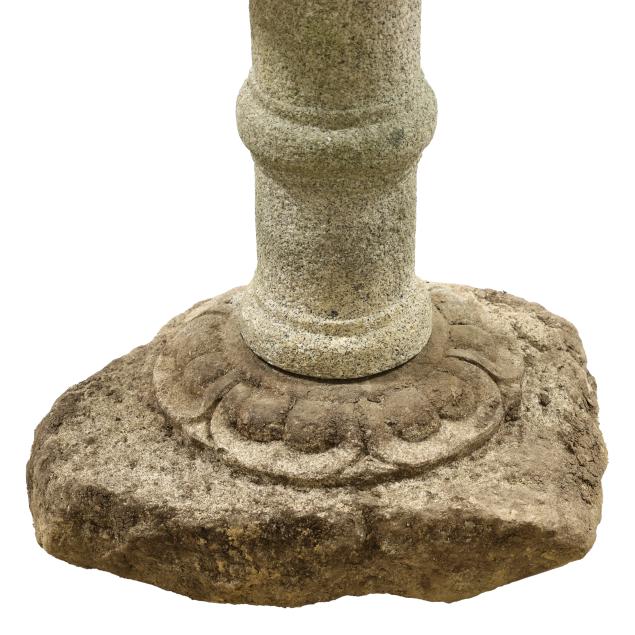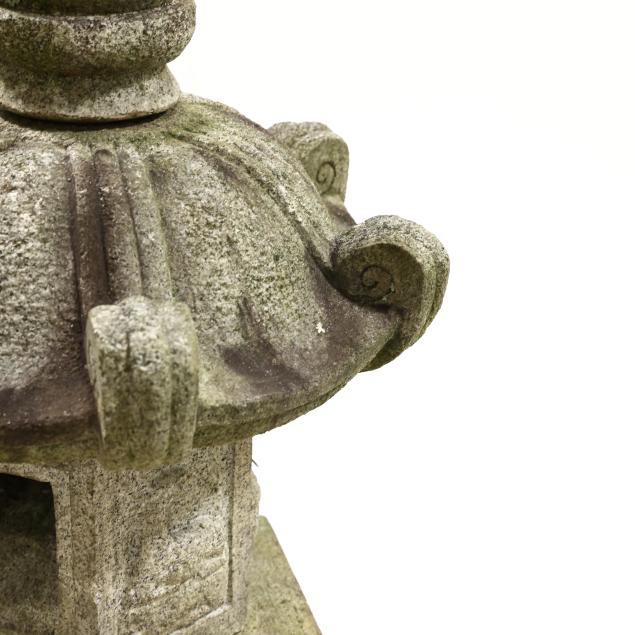
Lot 6048
A Japanese Carved Stone Temple Ishidoro Lantern Sculpture
Lot Details & Additional Photographs
56 in.
Property of a Gentleman, Collected in Japan
Purchased in Japan.
The stone lantern (ishidoro) was originally intended for a religious shrine. The most magnificent example of lanterns in such a setting is the group of two thousand ishi-doro lining the approaches to the Kasuga Shrine in Nara. Made of granite from Sado Island in the Japan Sea, such lanterns ultimately derive from an Indian temple form, which helps explain the combination of Buddhist and indigenous Japanese Shinto motifs. The octagonal pagoda shape is here made in six sections, with a lotus-form base and finial and a central component with two openings suggesting the sun and the moon. A lamp or a candle is placed in the hollowed-out opening. The secular use of stone lanterns as garden ornaments dates from the Momoyama Period (1568–1600). Aged appearance, such as weathered or mossy stone, is highly admired as sabi, one of the Japanese traditional aesthetic values.
Good estate condition; very nice patina and outdoor growth as expected with wear from being outside.








